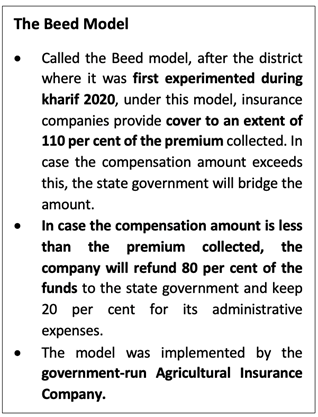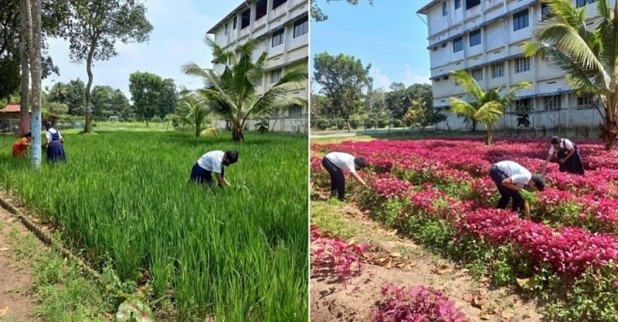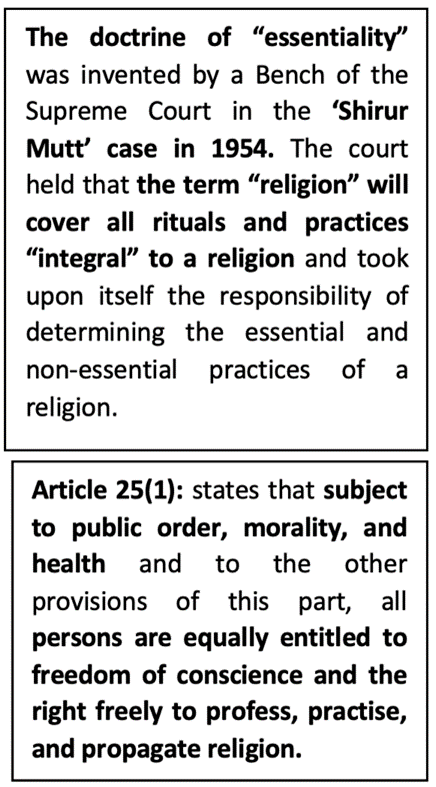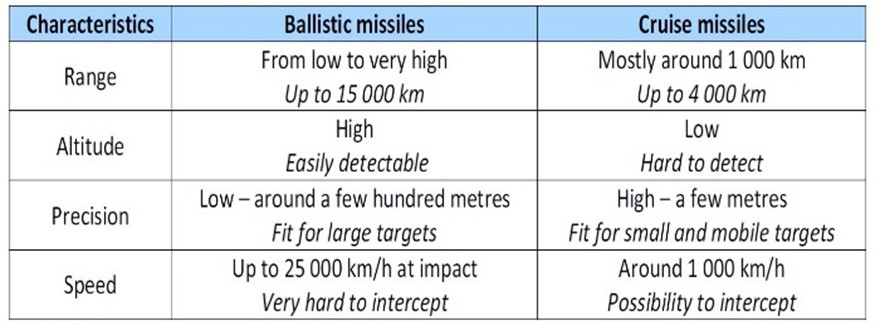Monday, 21st March 2022
Draft Health Bill
In News
The Union government has started the process of finalising various provisions of a draft National Public Health Bill for a new national public health law.
Need for a new Health law
- The Covid pandemic has brought public health policy in the country under scrutiny. The existing laws were largely incapable of handling a crisis of this level.
- India does not have a single, consolidated Public Health Emergency (PHE) preparedness and response code.
- Legal provisions relating to PHEs are scattered across a range of central and state laws, including laws focussed on epidemics and infectious diseases, disaster management laws, public health legislation, and criminal laws.
- The two Central Laws that in India to handle PHEs are as follows:
- Epidemic Diseases Act, 1897: The colonial era law only confers powers, without creating obligations or accountability or imposing restrictions on government.
- Disaster Management Act, 2005: It provides for government powers and duties to manage disasters, but is not a PHE - focussed law, and therefore, does not provide for PHE preparedness and response measures.

About the Bill
- The proposed law will deal with updated, scientific and comprehensive provisions on surveillance, disease notification and PHE arising from epidemics, disasters and bioterrorism.
- The Union Ministry of Health & Family Welfare had drafted a Public Health (Prevention, Control and Management of epidemics, bioterrorism and disasters) Bill in 2017.
- The proposed National Public Health Act has been in the works since 2017 and, once enacted, will replace the 125-year-old Epidemic Diseases Act, 1897.
Provisions in the Bill
- The draft Bill proposes a four-tier health administration architecture, with “multisectoral” national, state, district and block-level public health authorities who will have “well defined” powers and functions to deal with PHEs
- While the national public health authority is proposed to be headed by the Union Health Ministry, be chaired by health ministers of states.
- District Collectors will lead the next tier, and block units will be headed by Block Medical Officers or Medical Superintendents.
- These authorities will have powers to take measures for the prevention of non-communicable diseases and emerging infectious diseases.
- It provides for creation of public health cadres at national and state levels.
- The draft Bill has defined various measures such as isolation, quarantine and lockdown, which have been extensively invoked by the Centre and states for Covid management.
- It defines a lockdown as “restriction with certain conditions or complete prohibition of running any form of transport” on roads or inland water.
- The definition of a lockdown covers “restrictions” on the movement or gathering of persons in any place whether public or private. It also includes “prohibiting or restricting” the working of factories, plants, mining or construction or offices or educational institutions or market places.
Sources:
Kinzhal missile
In News
Russia has claimed recently to have used Kinzhal, its newest hypersonic missiles, for the first time in Ukraine.
About the News
- It was used with the motive to destroy storage of weapons in Unkraine.
- The missile’s indefensibility threatens and essentially holds the entire European area at risk, until a defense can be built providing Russia substantial strategic leverage.
What are the important features of the missile?
- About: Kinzhal, which means dagger is a hypersonic missile debuted by Russia in 2018. It is one of the six new Russian strategic weapons
- Speed: It is believed to achieve an accelerates to a speed of 4,900 km per hour, a speed of more than Mach 10and may reach the speed of 12,350 km per hour.
- Range: It is an air-launched hypersonic missile with a reported range of 1,500-2,000km.
- Payload capacity: It can carry nuclear payload of 480 kg. This is 33 times the yield of the Fat Man bomb dropped on Hiroshima.
- Trajectory: It has ability to perform evasive manoeuvres at every stage of flight carrying both conventional and nuclear warheads.

What are the strategic implications of Kinzhal?
- Deterrence: The missile is designed as a deterrence measure against United States and NATO warships posing a threat to missile systems in Russia.
- Overcoming defense system: It is designed to accelerate to hypersonic speed within seconds of launch and perform manoeuvres at any time during flight, allowing it to overcome any known United States air or missile defense systems including the MIM-104 Patriot, the Terminal High Altitude Area Defense (THAAD) system or the Aegis Combat System.
- Launch leverage: Being an ALBM, the missile can be launched from unpredictable locations possibly straining sectored (non-360 degree) radars, like the ones deployed for the Patriot system.
Sources:
Reasonable accommodation
In News
The Karnataka high court has rejected an argument in support of permitting Muslim girls wearing head-scarves that was based on the principle of ‘reasonable accommodation’.
About the news:
- The High Court had recently ruled in favour of the State government’s circular which stated that students in educational institutions should only wear prescribed uniforms, and in case where no code was prescribed, they should wear such attire that accords with the equality and integrity without disrupting public order.
- This decision has thus upheld the denial of entry to students wearing the hijab that was based on the principle of ‘reasonable accommodation’.

Principle of ‘Reasonable accommodation’
- What is it? It is a principle that promotes equality, enables the grant of positive rights and prevents discrimination based on disability, health condition or personal belief.
- Its use is primarily in the disability rights sector.
- Definition:
- UN Convention on the Rights of People with Disabilities (UNCRPD) defines reasonable accommodation as “necessary and appropriate modification and adjustments not imposing a disproportionate or undue burden, to ensure to persons with disabilities the enjoyment or exercise on an equal basis with others of all human rights and fundamental freedoms”.
- The International Labour Organization (ILO), in its recommendation on HIV/AIDS and the world of work, defines it as “any modification or adjustment to a job or to the workplace that is reasonably practicable and enables a person living with HIV or AIDS to have access to, or participate or advance in, employment”.
- Working: It works on the principle that reasonable accommodation should be provided, unless some undue hardship is caused by such accommodation.
- Role in contributing to workplace equality, diversity and inclusion: According to the ILO, the provision of reasonable accommodation at workplace plays a major role in addressing the issues of either loss of employment or lack of access to employment faced by the workers.
- This is particularly applied to the following categories of workers who would come across different kinds of barriers at work: workers with disabilities, workers living with HIV and AIDS, pregnant workers and those with family responsibilities, and workers who hold a particular religion or belief.
- How is the accommodation given? It is given in the form of a modified working environment, shortened or staggered working hours, additional support from supervisory staff and reduced work commitments. Suitable changes in recruitment processes such as allowing scribes during written tests or sign language interpreters during interviews will also be a form of accommodation.
- Legal Status in India: In India, “reasonable accommodation” finds its legal status under the Rights of People with Disabilities Act, 2016.
- The Supreme court in Jeeja Ghosh and Another vs Union of India and others 2016, had highlighted the importance of embracing the notion of positive rights, affirmative action and reasonable accommodation.”
- In Vikash Kumar vs UPSC, 2021, the SC opined that failure to provide reasonable accommodation amounts to discrimination.
Source:
- Explained | Did the Karnataka High Court’s hijab verdict overlook ‘reasonable accommodation’?
- Explained: Four questions in Karnataka HC’s hijab judgment, and why the court upheld Govt’s position
Image source:
International Day for the Elimination of Racial Discrimination
March 21 is observed as International Day for the Elimination of Racial Discrimination by the United Nations. The day aims to raise awareness about equality and marks as an initiative to end all forms of racism and racial discrimination and calls all sections of society to stand up against intolerant attitudes. The theme for International Day for the Elimination of Racial Discrimination 2021 is "Youth standing up against racism".This day is observed annually to commemorate the lives of 69 people who were killed in 1960, at a peaceful demonstration against the apartheid “pass laws” in Sharpeville, South Africa. This event is known as the Sharpeville tragedy or the Sharpeville massacre, which captured worldwide attention. International Day for the Elimination of Racial Discrimination was then established six years after the event in 1966.

Source:
Pradhan Mantri Fasal Beema Yojna
In news
The Maharashtra Government has warned to stop the implementation of the Pradhan Mantri Fasal Beema Yojna.
About The News
- The state would withdraw from the scheme if the changes suggested by it were not taken into consideration.
- Maharashtra has consistently seen a large number of farmers opting for the scheme. Till 2019-20, over 357 lakh farmers had opted for the scheme.
- The state has claimed that the scheme benefits the insurance companies more than the farmers and the public exchequer.
- The State Government has appealed for modifications in the scheme so that it becomes financially viable.
- The Maharashtra Government has suggested that the insurance companies pay a share of the premium collected from the farmers to the state during a normal year with less claims. This is known as the ‘Beed Model’.
- Gujarat and West Bengal had pulled out from the scheme earlier, with another major state looking to withdraw, serious question marks have been raised on the efficacy of the scheme.

Need for Crop Insurance in India
- Agriculture is a high-risk profession as most of the farmers depend on rain and the general weather conditions to grow their crops.
- In a year when rainfall levels were 100 millimetres less than average, farmer incomes would fall by 15 % during kharif and by 7 % during the rabi season.
- High temperatures may reduce crop duration, permit changes in photosynthesis, escalate crop respiration rates and influence pest population.
- Climate change has also increased the vulnerability to locust attacks, plant diseases and weeds which destroy crops and thereby reduce the farmers’ income.
- Mostly small and marginal farmers are harmed by natural disasters in India. As most of these farmers are poor, they cannot protect themselves from the vagaries of weather, natural disasters and the market fluctuations.
- Looking at the critical role played by agriculture in the socio-economic milieu of India, there is a need to tackle the risks associated with agriculture in a proper manner.
About the Pradhan Mantri Fasal Bima Yojna
- The PMFBY is in line with One Nation – One Scheme theme.
- Pradhan Mantri Fasal Bima Yojana (PMFBY) aims at supporting sustainable production in agriculture sector by way of:
- providing financial support to farmers suffering crop loss/damage arising out of unforeseen events
- stabilizing the income of farmers to ensure their continuance in farming
- encouraging farmers to adopt innovative and modern agricultural practices
- ensuring flow of credit to the agriculture sector.
- The difference between the premium paid by the farmer and the actuarial fair premium (APR) is subsidised by the government (shared by central and state governments on 50:50 basis).
- As an end-to-end risk mitigation mechanism for farmers, the scheme extends coverage for the entire cropping cycle from pre-sowing to post-harvest, including coverage for losses arising out of prevented sowing and mid-season adversities.
- Protection for key localised losses like hailstorm, landslide, inundation and post-harvest losses on individual farm basis.

What have been the Major Achievements of the Scheme?
- Increased Insurance: The average sum insured per hectare has increased from Rs 15,100 during the pre-PMFBY schemes to Rs 40,700 under PMFBY.
- Farmer Protection: It provides a safety net to the farmers. The minimum sum insured is equivalent to the production cost. Threshold Yield (If yield falls below the threshold yield, the farmers can file claims) is about 80 per cent of the average of past seven years’ yield, offering better protection to the farmers.
- Cost Reduction: The administrative cost of running the program is less than 2 per cent. While for most crop insurance programs around the world, the administrative & operating expenses are well over 15 per cent. This is due to the multi – agency approach adopted by the government.
- Banks as the distribution channels and claim disbursement points.
- State agencies provide yield assessment services and also promote insurance education & awareness.
- Increased Inclusiveness: Ease of enrolment with the help of a dedicated portal for enrolment of farmers. The scheme covers over 5.5 crore farmer applications year-on-year. The Aadhaar seeding has helped in speedy claim settlement directly into the farmer accounts.
- System Transparency: Transparent tender process and level playing ground for selection of insurers. Yield / loss assessment audit system with mandatory digital proof and uploading of pictures and data into a government portal.
- Flexibility: The scheme was made voluntary for all farmers, after its revamp in February 2020. Further, the states have also been provided flexibility to rationalise the sum insured so that adequate benefit can be availed by farmers.
- Easy Reporting: The scheme makes it easier for the farmer to report crop loss within 72 hours of occurrence of any event through the crop insurance app, common service centre or the nearest agriculture officer.
Issues related to PMFBY
- Confusion in Crop Notification: The voluntary implementation of the scheme by the states gives them discretion to notify the crops covered for a particular season. Many farmers are excluded due to delays and arbitrary notification of crops.
- Over time, PMFBY has become a costly scheme for the government and is not providing adequate and timely financial support to agriculture households. Due to this reason, some states have already discontinued offering PMFBY and assisting their farmers with other crop insurance schemes.
- Delay and Denial: Delayed pay-outs and denial of claims are common complaints against insurance companies. This was despite the highest premium collection over years.
- Problematic Coverage: States have a discretion to decide the area to be covered for a particular premium. Thus, to reduce the premium burden, the state administration limits this area.
- Exclusion of Leased Land: Leasing agricultural land in prohibited in some states. This excludes the tenant farmers as they do not have the and leasing certificate.
- Crop Cutting Experiments: Lack of skilled professionals and the use of obsolete technology in CCEs (Crop Cutting Experiments) leads to inaccuracy and delays in estimation.
- Lack of awareness: The CAG has pointed out that only 37% of the farmers were aware of the scheme in 2017. This reduces the interest taken by the farmers in the scheme and at the same time, increases the difficulty of the insurance companies to sell their products and services.
- One size fits all approach: It follows a one size fits all approach without giving any option to the farmers to choose an insurance that meets the specific needs of their regions.
- Problems of Insurance Companies: Currently, the scheme is given exclusively to an insurance company through bidding for a particular area known as a cluster. The present cluster size in key states is too large, preventing the small to mid-size insurance companies to participate.
- Insurance companies have pointed out that the nature of the insurance allows for payment only when there is a loss. Also, over the last few years, their pay-outs have been more than the premium collected, making the scheme non-viable for them.
What are the Reforms that can be brought about in the Scheme?
- Option shall be given to States/UTs to choose Scale of Finance or district level Value of Notional Average Yield (NAY). This will allow the state government to allocate resources in a planned manner.
- Minimum Support Price (MSP) as Sum Insured for any district crop combination. Farm gate price will be considered for the other crops for which MSP is not declared. This will help farmers get a fair price for their produce.
- Flexibility to States/UTs to implement the Scheme with option to select any or many of additional risk covers/features like prevented sowing, localised calamity, mid-season adversity, and post-harvest losses.
- Further, States/UT can offer specific single peril risk/insurance covers, like hailstorm etc, under PMFBY even with or without opting for base cover. This will make the scheme more affordable for the farmers, leading to more adoption and reducing the burden of the state per capita.
- States not to be allowed to implement the Scheme in subsequent Seasons in case of considerable delay by States in release of requisite Premium Subsidy to concerned Insurance Companies beyond a prescribed time limit.
- For estimation of crop losses/admissible claims, two-Step Process to be adopted based on a defined Deviation matrix" using specific triggers like weather indicators, satellite indicators, etc. for each area along with normal ranges and deviation ranges. Only areas with deviations will be subject to Crop Cutting Experiments (CCEs) for assessment of yield loss.
Question: Critically analyze the Pradhan Mantri Fasal Bima Yojna
Sources:
- Indian Express – Explained PMFBY:
- Government website -
- The Hindu Business Line- Insurance companies reaping benefits in Maharashtra
- Risk Management in Agriculture – Report by NITI Aayog
- India’s Façade of Agricultural insurance – Down to Earth
- FAQ:
- Pradhan Mantri Fasal Bima Yojana completes 5 years of operation; govt urges farmers to take benefit of scheme:
Eugene Parker
This is image of Eugene Parker, a physicist who theorized the existence of solar wind, and became the first person to witness the launch of a spacecraft bearing his name, the Parker Solar Probe. He died recently. His solar wind theory was widely criticized and even mocked at publication. He was vindicated in 1962 when a NASA spacecraft mission to Venus confirmed his theory and solar wind's effect on the solar system, including occasional disruptions of communications systems on Earth.

Source:
Methyl Isocyanate
- Context: The 337 tonnes of hazardous waste at the Union Carbide’s plant in Bhopal is planned to be burnt in an incinerator, after 37 long years.
- The waste was dumped in the plant after the leakage of about 30 tonnes of Methyl Isocynate gas from the plant in 1984- the world’s worst industrial accident.
- The gas leak claimed the lives of 3,928 people, according to official data, however it is believed that atleast 10,000 people would have died from the catastrophe.
- Methyl isocyanate is a colourless highly flammable liquid that evaporates quickly when exposed to the air.
- It is an organic compound with a sharp, strong odour and is used in the production of pesticides, polyurethane foam and plastics.
- As a highly toxic and irritating material, it is extremely hazardous to human health.

Source:
Religiophobia
- Context: Asserting that religious phobias are not any single restricted religion, India has recently urged the United Nations to acknowledge the prevalence of "religiophobia," rather than single out a single faith.
- This has come in the backdrop of a UN resolution to combat Islamophobia introduced by Pakistan and several Islamic nations.
- Religiophobia is an irrational or obsessive fear or anxiety of religion, religious faith, people or organisations.
- India, regarding this has opined that instances of discrimination, intolerance and violence have been directed against members of many religious communities in various parts of the world and not just against those who followed Abrahamic faiths (Judaism, Christianity, and Islam).
- It also argued that instances like the destruction of Bamyan Buddha, attacks on temples and gurdwara, and glorification of breaking of idols in temples etc. have contributed to the rise of contemporary forms of religiophobia against non-Abrahamic religions specially anti-Hindu, anti-Sikh and ant-Buddhist phobias.
- Therefore, elevating the phobia against one particular religion will downplay the seriousness of phobias against all other religions.

Source:
- India urges UN to recognize Religiophobia rather than just Islamophobia
- Recognize 'religiophobia' rather than just Islamophobia: India urges United Nations
Image source:
Age limit for NEET-UG
- Context: The upper age limit for appearing in the National Eligibility cum Entrance Test (Undergraduate) [NEET-UG] has been removed recently by the National Medical Commission (NMC).
- NEET is the only entrance examination in India for admission to MBBS, BDS and some other allied courses in which around 15 lakh students appear each year.
- Earlier, the age limit that was 25 years for general category candidates and 30 years in the case of reserved category candidates have now been removed by the NMC.
- The decision will immensely benefit the aspiring doctors and help in strengthening medical education in the country.
- The National Medical Commission is the top regulatory body of medical education and medical professionals in the country.

Source:
Image source:
BBIN Motor Vehicles Agreement (MVA)
- Context: With Bhutan not participating in the Motor Vehicles Agreement (MVA) a meeting of the other three countries was held recently to discuss the next steps in operationalising the agreement for the free flow of good and people between them.
- The BBIN Motor Vehicle Agreement for the Regulation of Passenger, Personal and Cargo Vehicular Traffic was signed between the 4 countries (Bangladesh-Bhutan-India-Nepal) in 2015.
- It aims at operationalising the MVA by concluding the Passenger and the Cargo Protocolthat will help realise the full potential of trade and people to people connectivity between the BBIN countries by fostering greater sub-regional cooperation.
- The BBIN underwent a major setback after objections from Bhutan in 2017 over sustainability and environmental concerns.
- The project has been supported by Asian Development Bank as a part of its South Asian Subregional Economic Cooperation
- The World Bank will also be supporting the infrastructure project.

Source:
- Bangladesh, India, Nepal move ahead on motor vehicle agreement project
- India, Bangladesh, Nepal finalise MoU to boost trade and connectivity
Image source:
UNSC is not fulfilling its primary mandate: HT
Essence: The editorial themes around changing role of UNSC from its primary agenda of maintaining international peace and security to delivering humanitarian assistance during war times. Not addressing the conflict and efforts for "band aid" render the council useless, speaking of justice in petty criminal matters and becoming a platform for diplomacy.
UN charter provides for addressing "threats to peace" but extending humanitarian aid as an extension to maintaining peace could only be treated as a secondary objective. Since the security council is a political body, this extended mandate is naturally governed through national prism of what constitutes humanity, impartiality, neutrality and independence. While there are innumerable examples of such biases- Syria, Ukraine, etc. India must introspect as a member of UNSC if it favors such an evolving role for global security council.
Why you should read this article?
- To know impacts of divergence from UNSC mandates and its reasons.
- To understand the responsibilities of UN secretariat and how it aligns with de-facto functions of UNSC.
Source:
An ‘atmanirbhar’ India can look the world in the eye: IE
Essence: Russian attack on Ukraine has not only put India in fix over which side to support, it has also exposed limitations of India’s “strategic autonomy”. Despite all the reasons Russia had to feel threatened by actions of NATO and Ukraine, invasion of a sovereign country must have been deplored. India’s inability to do so is because of over dependence on Russia for military hardware.
If India has to have a truly independent foreign policy, we have to focus on “de-Russification of the armed forces” and the genuine “indigenization of India’s defense technological and industrial base (DTIB)”.
Why should you read this article?
- To understand reasons behind stance taken by India on Russian attack on Ukraine
- To understand what steps should be taken by India to ensure real strategic autonomy.
Source:
India: The poorest super-emitter needs a different path to net-zero: LM
Essence: The article talks about the issues and concerns around India’s Climate Goals. India has no role model to follow being the third largest emitter in the world with one of the highest population of poor. In order to achieve the Net-Zero commitment by the year 2070, India shall have to rely on homegrown measures such as Energy Saving Factories, the successful Gram Ujala scheme for LED distribution, Solar and Wind Energy and cleaner cooking energy. These measures have already boosted energy efficiency and cut living expenses for millions of people. India has a big task of pulling a vast population out of poverty along with cutting down emission especially when it is highly vulnerable towards climate change and is likely to suffer extreme climate events in future. Unlike rich countries that have to slowly replace existing infrastructure, a developing country such as India can reimagine how it builds cities and industries from scratch. It can avoid locking in an emissions-heavy future.
Why you should read this article?
- The article gives an insight into India’s vulnerability and concerns regarding meeting Net-Zero targets.
- The article also provides possible solution as to how India can tackle the issue by homegrown measures.
Source:
An Eco-friendly School in Kerala
Background
Education needs to grow beyond the regular syllabus and develop into a life-long understanding our surroundings.

Working of the Eco-friendly School in Kerala?
- Chavara Darsan CMI Public School in Kerala is working towards imbibing eco-friendly initiatives and carbon neutrality ideas in students.
- The initiative started 7 years ago when Father Paulose Kidangan, an active environmentalist and nature-lover, joined the school.
- The school started with cultivation of bamboos, and today there is a bamboo garden with 34 variety of the plant inside the school campus.
- An eco-friendly garden has been built on the basis of several carbon-neutral natural methods to grow vegetables, paddy, herbs and several other plants.
- The school also set-ups market, where students participate as the shopkeeper, to sell the produce from the garden.
- Solar panels are installed on the campus and the school runs completely on solar energy.
Quote: "Let's nurture the nature so that we can have a better future." - Anonymous
Source:
Share the article
Get Latest Updates on Offers, Event dates, and free Mentorship sessions.

Get in touch with our Expert Academic Counsellors 👋
FAQs
UPSC Daily Current Affairs focuses on learning current events on a daily basis. An aspirant needs to study regular and updated information about current events, news, and relevant topics that are important for UPSC aspirants. It covers national and international affairs, government policies, socio-economic issues, science and technology advancements, and more.
UPSC Daily Current Affairs provides aspirants with a concise and comprehensive overview of the latest happenings and developments across various fields. It helps aspirants stay updated with current affairs and provides them with valuable insights and analysis, which are essential for answering questions in the UPSC examinations. It enhances their knowledge, analytical skills, and ability to connect current affairs with the UPSC syllabus.
UPSC Daily Current Affairs covers a wide range of topics, including politics, economics, science and technology, environment, social issues, governance, international relations, and more. It offers news summaries, in-depth analyses, editorials, opinion pieces, and relevant study materials. It also provides practice questions and quizzes to help aspirants test their understanding of current affairs.
Edukemy's UPSC Daily Current Affairs can be accessed through:
- UPSC Daily Current Affairs can be accessed through Current Affairs tab at the top of the Main Page of Edukemy.
- Edukemy Mobile app: The Daily Current Affairs can also be access through Edukemy Mobile App.
- Social media: Follow Edukemy’s official social media accounts or pages that provide UPSC Daily Current Affairs updates, including Facebook, Twitter, or Telegram channels.





